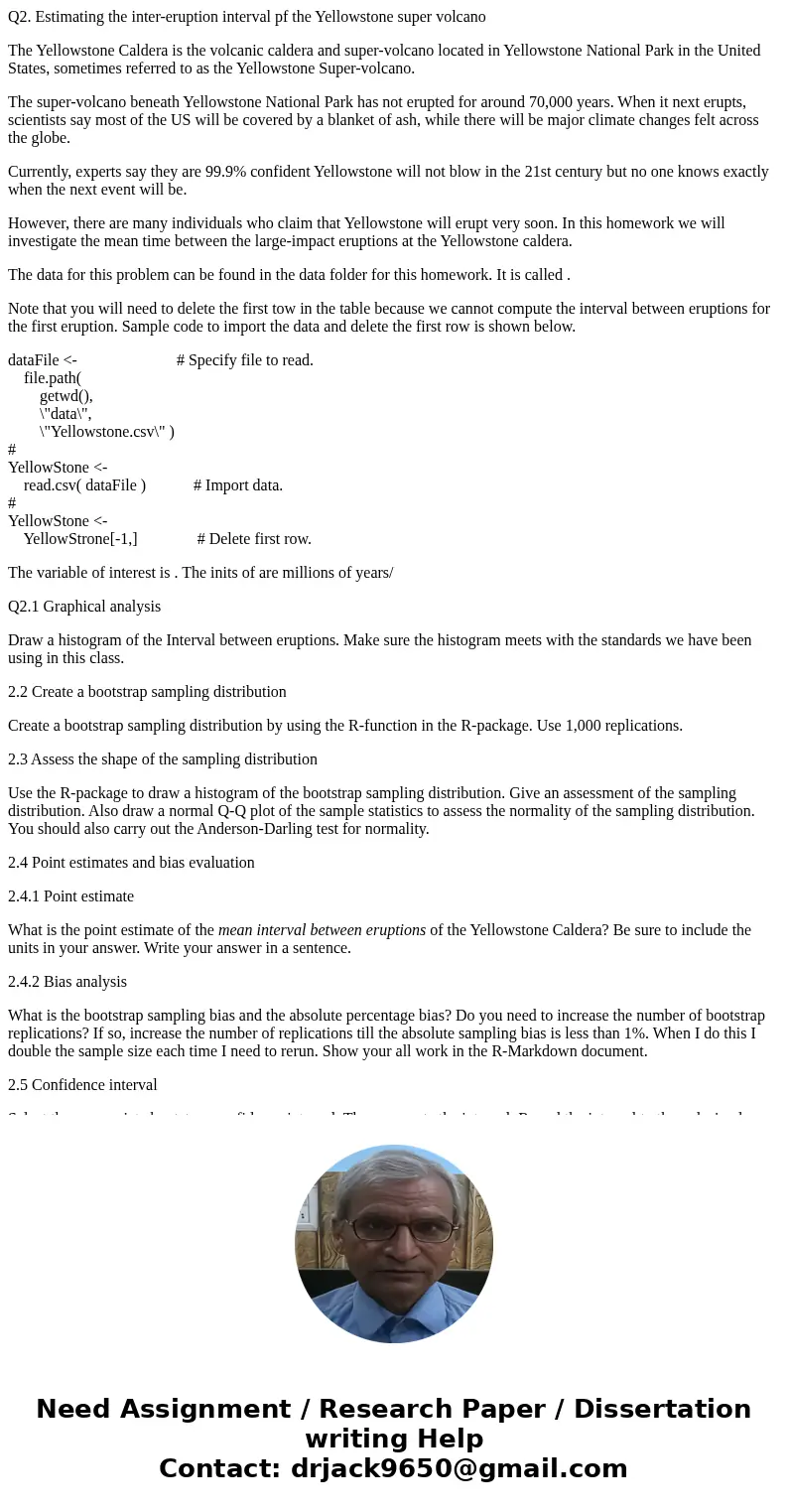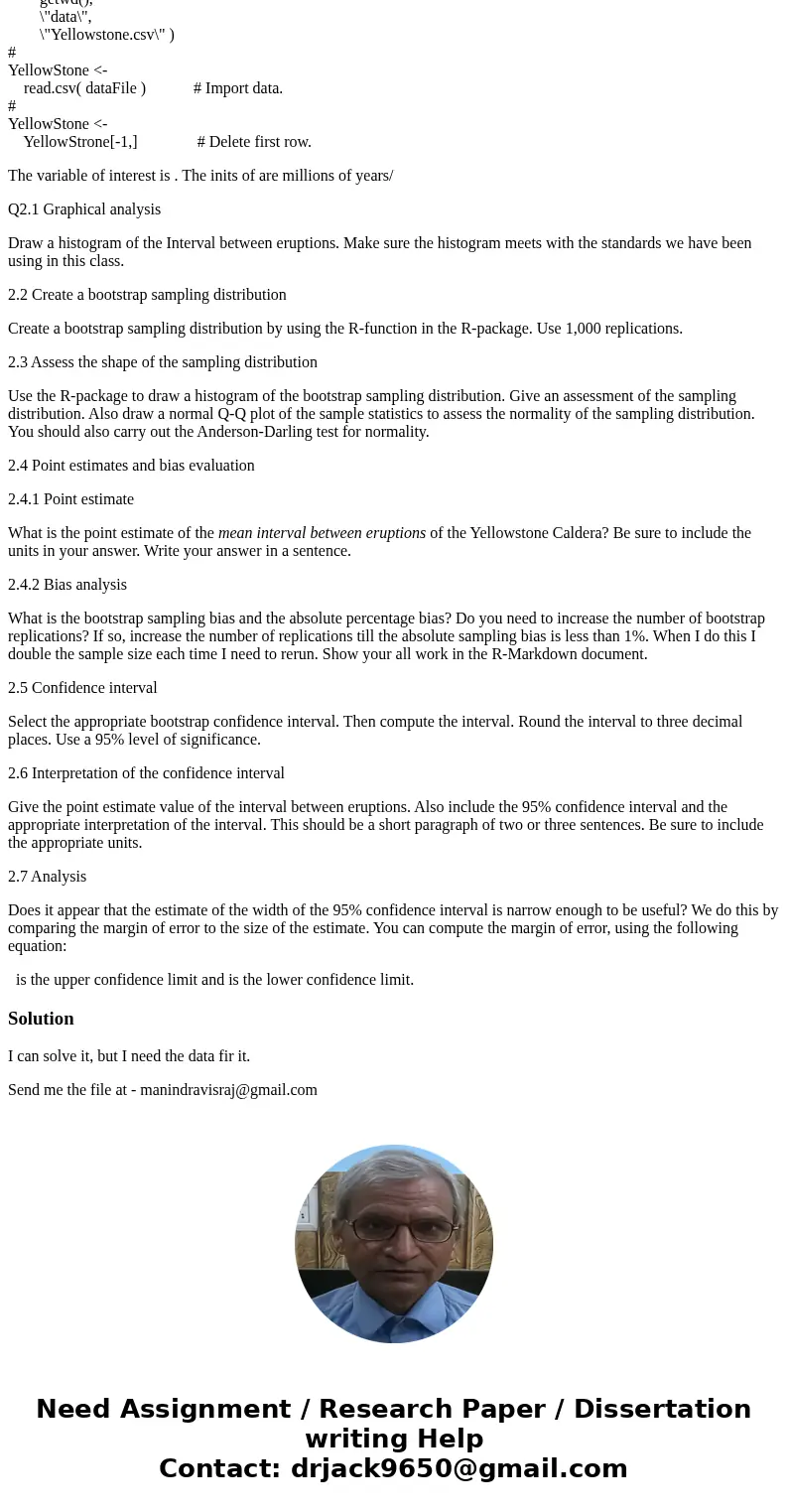Q2 Estimating the intereruption interval pf the Yellowstone
Q2. Estimating the inter-eruption interval pf the Yellowstone super volcano
The Yellowstone Caldera is the volcanic caldera and super-volcano located in Yellowstone National Park in the United States, sometimes referred to as the Yellowstone Super-volcano.
The super-volcano beneath Yellowstone National Park has not erupted for around 70,000 years. When it next erupts, scientists say most of the US will be covered by a blanket of ash, while there will be major climate changes felt across the globe.
Currently, experts say they are 99.9% confident Yellowstone will not blow in the 21st century but no one knows exactly when the next event will be.
However, there are many individuals who claim that Yellowstone will erupt very soon. In this homework we will investigate the mean time between the large-impact eruptions at the Yellowstone caldera.
The data for this problem can be found in the data folder for this homework. It is called .
Note that you will need to delete the first tow in the table because we cannot compute the interval between eruptions for the first eruption. Sample code to import the data and delete the first row is shown below.
dataFile <- # Specify file to read.
file.path(
getwd(),
\"data\",
\"Yellowstone.csv\" )
#
YellowStone <-
read.csv( dataFile ) # Import data.
#
YellowStone <-
YellowStrone[-1,] # Delete first row.
The variable of interest is . The inits of are millions of years/
Q2.1 Graphical analysis
Draw a histogram of the Interval between eruptions. Make sure the histogram meets with the standards we have been using in this class.
2.2 Create a bootstrap sampling distribution
Create a bootstrap sampling distribution by using the R-function in the R-package. Use 1,000 replications.
2.3 Assess the shape of the sampling distribution
Use the R-package to draw a histogram of the bootstrap sampling distribution. Give an assessment of the sampling distribution. Also draw a normal Q-Q plot of the sample statistics to assess the normality of the sampling distribution. You should also carry out the Anderson-Darling test for normality.
2.4 Point estimates and bias evaluation
2.4.1 Point estimate
What is the point estimate of the mean interval between eruptions of the Yellowstone Caldera? Be sure to include the units in your answer. Write your answer in a sentence.
2.4.2 Bias analysis
What is the bootstrap sampling bias and the absolute percentage bias? Do you need to increase the number of bootstrap replications? If so, increase the number of replications till the absolute sampling bias is less than 1%. When I do this I double the sample size each time I need to rerun. Show your all work in the R-Markdown document.
2.5 Confidence interval
Select the appropriate bootstrap confidence interval. Then compute the interval. Round the interval to three decimal places. Use a 95% level of significance.
2.6 Interpretation of the confidence interval
Give the point estimate value of the interval between eruptions. Also include the 95% confidence interval and the appropriate interpretation of the interval. This should be a short paragraph of two or three sentences. Be sure to include the appropriate units.
2.7 Analysis
Does it appear that the estimate of the width of the 95% confidence interval is narrow enough to be useful? We do this by comparing the margin of error to the size of the estimate. You can compute the margin of error, using the following equation:
is the upper confidence limit and is the lower confidence limit.
Solution
I can solve it, but I need the data fir it.
Send me the file at - manindravisraj@gmail.com


 Homework Sourse
Homework Sourse